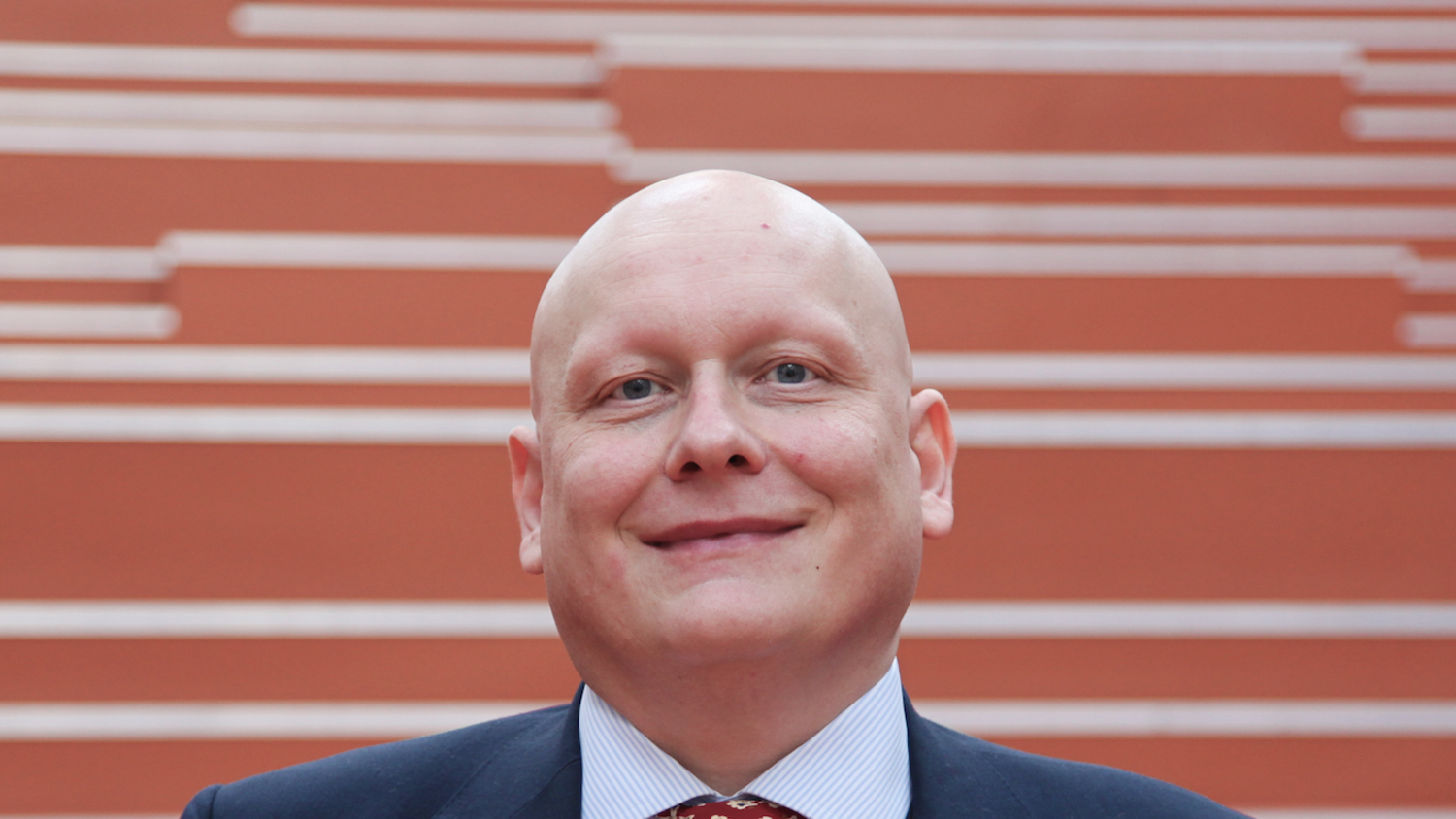'Disasters do not recognise administrative boundaries' – Dr. Nicola Tollin
Disasters do not respect borders, making cooperatin across borders vital. Interreg plays a key role in addressing DRM related challenges by supporting collaborative initiatives under the EU cohesion policy. Many Interreg projects demonstrate the importance of collaboration, innovation and nature-based approaches in building resilience and enhancing preparedness for various hazards and threats which are becoming very frequent.
Hearing from a global expert
Dr. Nicola Tollin, a leading expert in urban resilience, has over 20 years of experience in research and capacity-building across Europe and beyond. He holds the UNESCO Chair on Urban Resilience at the University of Southern Denmark and has worked with global organisations such as the European Commission, UN-Habitat, and the UNFCCC. In this interview, Dr. Tollin shares insights on how cities can better manage disaster risks and build resilience in the face of ongoing climate change and other challenges.
How important is disaster risk management to ensure cities and regions are resilient for shocks and stresses from multiple challenges such as climate change and beyond in a time of some many uncertainties?
The way we perceive disaster risk has fundamentally changed over the past decade(s). Historically, disaster risk reduction has been static, and reactive and single hazard oriented. The tendency has been to focus prominently on response and recovery and with limited ability to look at future risk(s), and with a lack of understanding about the relation between local impacts and global dynamics/events. However, climate change has shown us that this approach to risk is not viable any longer, due to the intensification of the frequency and magnitude of climate induced extreme events, from floods in Valencia to wildfires in California.
Nowadays, it is increasingly recognized that disaster risk reduction requires a systemic approach, with stronger emphasis on risk prevention and mitigation, and consideration for multiple/compounded hazards and risks, for example recognizing that global challenges as climate change have multiplying effects and impact related to other risks. Moreover, increasing attention is given to exposure and vulnerability (e.g. people, infrastructures and ecosystems), which intersect with key issues such as: poor urban planning, social inequalities, fragile infrastructures, hindered ecosystems and ecosystem services. A flood, for example, is not merely a water hazard, but it is intrinsically related to issues like resource management, land-use policies and governance structures. Finally, more attention is given increasingly to loss and damages that are produced by the failure of risk mitigation or climate change adaptation. For this reason, the concept of resilience, as a systematic and integrated manner to address climate change, disaster risk reduction and sustainable development, has been exponentially developing both in theory and practice.
A fundamental issue in the context of disaster risk reduction, particularly in relation to climate change, is the role of cities and regions/territories. Cities are increasingly exposed to climate risks, where human population concentrate and often is more exposed and vulnerable to risk in general and climate impacts specifically. At the same time, cities are having major difficulties in managing risk, due to several reasons, for example: lack of data, limited capacity, financial and administrative constrains, and access to knowledge and technologies. Ultimately cities are not adapting fast enough. While awareness has increased, implementation remains slow and fragmented. Many urban areas still lack clear, long-term resilience strategies and plans that integrate climate adaptation, disaster risk reduction, and sustainable development. For example, Denmark is the only country worldwide where all municipalities have developed, and are now implementing, local climate action plans.
How can the interaction between different levels of government promote resilience and disaster risk management?
Governance is the backbone of resilience. In order to promote resilience, it is important to have more cross-sectorial integration at national and at local level, integration between national policies and local actions, stakeholders’ participation and engagement of local communities.
Often, both and national and local level, decision making is done in silos, where different departments are working in isolation (e.g. climate, DRR and environment). In this case horizontal integration of governance is needed to ensure integration between different sectors; for example, if a climate plan is not developed together with a comprehensive DRR strategy, understanding compounded hazards-vulnerability-exposures, it will not be effective.
It is also usual to see a lack of coordination and integration between national policies and local action. For example, national climate goals need the contribution from municipalities and regions to achieved; at the same time local climate plans cannot be implemented without proper support from national government in terms of finance, technology and capacity building. Thereby, it is evident that vertical integration in governance, based on the collaboration between national and subnational actors, is fundamental for resilience.
For example, in Denmark most municipalities are including flood prevention in their climate plans, but often this is not in coordination with neighborhood municipalities, again limiting the effectiveness of response plans. Moreover, in Denmark, municipalities are rarely including sea level rise actions in their climate plans, as this is an issue more explicitly require collaboration between several municipalities and other national and subnational authorities.
If you had to explain to someone without knowledge, what is multi-disaster approach and how can it support cities and regions to be prepared for different shocks and stresses?
Cities are vulnerable and exposed to multiple risks (e.g. climate change, natural and human induced disasters) that are often interlinked (compounded) and can have domino effects; for example, a tsunami that affects an industrial area can trigger chemical spills, or an earthquake can disrupt energy production and distribution, leaving hospitals with no power.
A multi-hazard/multi-risk approach is not optional, but it is indispensable, understanding how different risks are interrelated is fundamental to build resilience in time. For example, droughts can trigger wildfires, as well as periods of floods can succeed periods of droughts. This shows that for to build urban resilience it is indispensable to have a systemic approach that goes beyond focusing on single shocks and stresses.
What are some of the lessons or good practices which could support European cities and regions to become more resilient and prepared for potential disasters?
European cities and regions are more exposed and vulnerable to risk, and less prepared for it, than we may think, and exposure and vulnerability is raising, for example due to climate change.
In the past years all EU countries have been experiencing their fragility: the floods in Germany-Belgium-Netherlands in 2021 and in Valencia in 2024, the heatwaves across Europe in 2022 and 2023, drought in Denmark in 2018-20-22, wildfire in Greece, Portugal, Italy, notably in Spain in 2023. But European cities and regions are also exposed to non-climate induced risks, from the geological risk increasing near Napoli in Italy, to the direct and indirect risks of the war in Ukraine or the Covid-19 pandemic. All these risks, as previously mentioned, are compounded: some are known but difficult to foresee, like the geological risk in Napoli, others were considered low-probability but high-impact like Covid, some are new and unexpected like drought in Denmark, some are old as civilization and always devastating, like the war in Ukraine.
Cities are more aware that action cannot be delayed, and there are good practices that gives us hope: as the comprehensive set of actions against heatwaves in Paris, that through nature-based solution are greening the cities and establishing over 1000 cool spots in the city; or the cloudburst plan of Copenhagen, combining green areas and recreational spaces with climate adaptation and flood control. But individual experiences cannot serve alone without a strong and ambitious strategy at EU level, that will definitely be harder to devise and implement in a moment where all attention and financial resources are to be allocated for weapons and warfare. Although these good practices are not sufficient, when most municipalities, particularly small and medium ones, are lacking the necessary financial and human capacities to implement plans and actions for urban resilience.
Ultimately Europe shall be supporting collaboration and exchange, as it does by common research and innovation framework like Horizon Europe and Interreg, promoting the knowledge co-creation and exchange among European cities, for example bringing together Portugal, Spain and Sweden to prevent wildfires or Italy, Romania and Estonia to work on flood.
Moreover, EU shall also be about cooperation and exchange with non-European countries, also open to the possibility of global South-North support and exchange, for example remembering how medical doctors from Cuba supported Italy during COVID-19, or when the esteemed Prof. Saleemul Huq, in the aftermath of the floods in 2023, put at disposal of Germany the immense knowledge that Bangladesh has been developing on early warning.
Finally, how do you think collaboration across borders can ensure disaster risk management is strengthened in Europe?
Interreg projects are doing a great job, working across borders, promoting collaboration and exchange of knowledge and experiences across neighborhood countries and across whole Europe. But more collaboration at regional and national level would be welcomed and needed for building urban and territorial resilience in face of disaster risk reduction and climate change; particularly building/developing capacities and supporting vertical and horizontal integration for multi-level governance.
Disasters do not recognise administrative boundaries. Wildfire, heatwaves, or floods can spread across cities, regions, and even countries. This is why resilience is a shared responsibility.
In Europe, for example, urban centres are deeply interconnected—through transportation networks, energy systems, and economic flows. If one city’s infrastructure fails, the ripple effects can disrupt entire regions.
This is where cross-border collaboration becomes essential. Cities need to cooperate beyond national borders, sharing data, expertise, and policy frameworks to develop joint adaptation measures.
A strong example of this is regional climate agreements that facilitate coordinated resilience planning. But beyond governmental cooperation, we must also engage businesses, academic institutions, and civil society in shaping cross-border resilience solutions.
Further reading
The EU Commission’s report, Strengthening the Resilience of EU Border Regions provides further insights and case studies on what is already being done in the EU to address disaster risk management.


